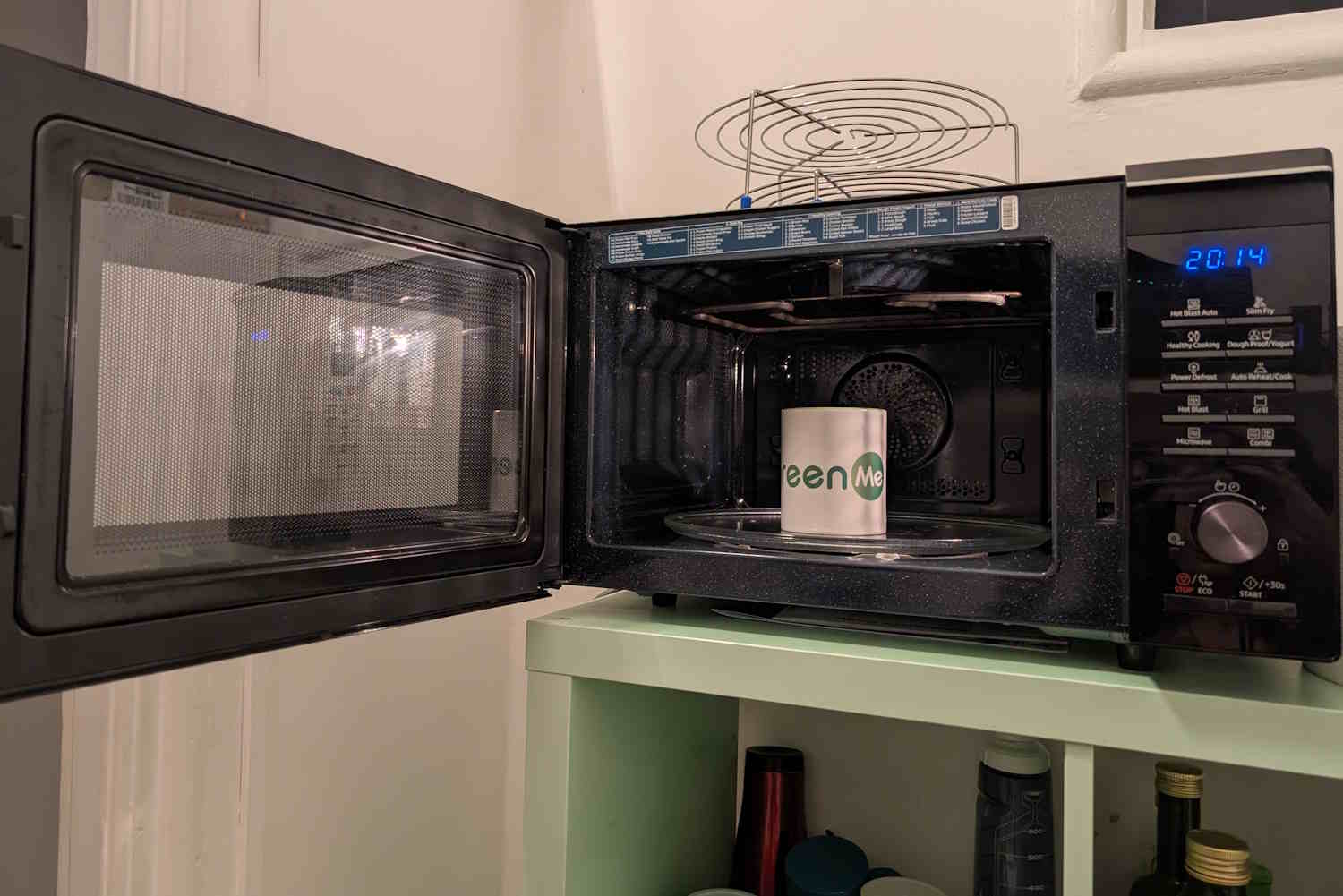The microwave oven in the office hides dangers, linked to the proliferation of bacteria. Let's see the dangers and how to behave to protect your health and the work environment.

@greenMe
Table of contents
Who has not zapped their lunch in the office microwave? Whether spaghetti leftover, a sandwich, or pizza, these morning and afternoon rituals can be serious health threats.
Microwave ovens, designed to heat food quickly, can be hotbeds for bacteria—like the office break room where employees gather during their breaks. Germs don’t end at the desk or restroom, however. The real culprit might be sitting right in front of you, in the middle of the lunch hour, where the microwave is the unwitting culprit behind a food safety threat.
The unseen truth about microbes
If you think the office bathroom is the germiest spot in the office, think again. Studies indicate that break rooms and office kitchens are among the most germ-infested spaces. The biggest concentration of bacteria is in a surprising location: where employees prepare their lunches—potentially lethal ones such as salmonella, e. coli, and staphylococcus.
Microwave ovens destroy bacteria through heat, but irregular heating usually results in their failure to do the work effectively. And that is where the real danger lies.
Most individuals don’t give much thought to the use of the microwave. Certain foods are not heated evenly, creating “cold spots” in which bacteria may reside and breed. A small mistake—failing to stir food properly or not turning it—is enough to make the microwave a health hazard.
An invisible battlefield
Imagine this: after a long meeting, you walk into the office break room, ready to heat up your lunch. The microwave is sitting there, waiting, with the plastic bowl of the last user still remaining. But that microwave might have another tale to tell.
It’s easy to think that food is safe due to a quick warming up, but it doesn’t always work that way. Every microwave meal contains unseen leftovers—bacteria and germs that develop inside, especially if the appliance is not regularly cleaned.
Research has confirmed that office building microwaves occupied by hundreds of employees have astronomically high rates of contamination. In one such study conducted in 2012 involving nearly 5,000 swabs from office surfaces, the kitchens and break rooms were the most contaminated spots. These kinds of microwaves, if not cleaned regularly, turn into a silent war ground upon which foodborne pathogens thrive.
Prevention is better than cure
The good news? Prevention is simple. By taking a few easy steps, you can cut down on health risks.
Start by trying to avoid heating up food past 2:00 pm. At this time, bacteria from lunch and breakfast have had several hours to accumulate in the environment. If possible, eat in advance or choose a snack that doesn’t require reheating.
When heating in the microwave, remember to cover food with a paper towel or lid to avoid splattering, spreading bacteria within the appliance. Furthermore, don’t forget to rotate and stir your meal during the heating process—this ensures a uniform temperature distribution and optimal bacterial destruction.
The appropriate temperature for safety
Speaking of heat, make sure your food is heated to an internal temperature of at least 165°f—recommended by the u.s. department of agriculture (usda)—to kill most bacteria.
Although it sounds like a trivial element, a simple food thermometer is what separates a safe meal from an unsafe one. Secondly, remember to wipe the microwave itself quite regularly, and in particular, the door handle and buttons where bacteria most frequently wait. Let’s be honest, no one wants to catch a sticky handle after which to warm their meal. A swift wipe can come a very long way towards ensuring cleanliness.
Making a difference at work
Lastly, while it might feel a little awkward, consider putting up a reminder sign in your office break room. A small notice encouraging cleanliness and proper microwave use could prevent unnecessary contamination.
You may not become the most popular coworker, but you’ll definitely be the one who prioritizes health and food safety. And in the long run, that’s something everyone will appreciate.
